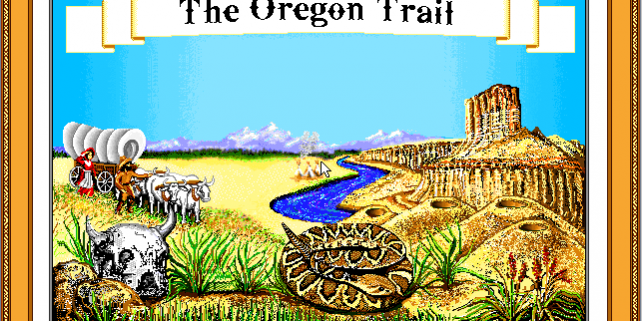

Moreover, the trail becomes much more difficult to travel when encroaching upon the winter months. A faster pace will allow the party to reach Oregon sooner, granting time bonuses. The initial choice players make, and can constantly change if wished, is the pace of the oxen. The Oregon Trail gives children plenty of opportunities to rationally think about the situation, giving many options and many possible consequences for each event, thus building problem solving skills. It is also recommended for players to purchase spare parts, such as extra wagon axles and yokes. Players then buy equipment, oxen, food, and ammunition for the journey. This can be considered historically unrealistic, as many professionals (like those in the Donner party) could not aptly adapt to the wilderness surroundings. Characters with more money are generally considered easier to play, as there is a buffer against food shortages and wagon accidents, should they occur.
#The oregon trail 1.2 for windows series#
While future games in the Oregon Trail series featured a larger variety of character types with more variation in their strengths and weaknesses, there are only two variables that define these three types of character: amount of money at the beginning (banker has the most, farmer has the least, carpenter is between the two), and the multiplier applied to a player's final score (farmer has the highest, banker has the least, carpenter is in between). The player can choose to be a banker from Boston, a carpenter from Ohio, or a farmer from Illinois. The player(s) is presented with a series of menus determining the profession, purchases, and names of party members. The game is initially set in Independence, Missouri in the year 1848, which is the start of the Oregon Trail. Later versions were distributed by Brøderbund after MECC was sold to The Learning Company. It became a very common program for Apple computers in public schools during the mid-1980s and 1990s. Oregon Trail was distributed through the consortium to educational institutions. One of the original developers, Don Rawitsch, later began working at the state-funded Minnesota Educational Computing Consortium (MECC) in 1974, where he introduced the game. The first version of the game was made in 1971 and was designed for the teletype machines operating at Carleton College. The success of the game has spawned numerous sequels.

The player takes the role of a party of people, of a selected profession, traveling across the Oregon Trail in a Conestoga wagon. The game was inspired by the real-life Oregon Trail and was designed to teach schoolchildren about the realities of 19th century pioneer life on the trail. The Oregon Trail is an edutainment computer game about American pioneer life that has a long history in North American school districts and homes.


 0 kommentar(er)
0 kommentar(er)
